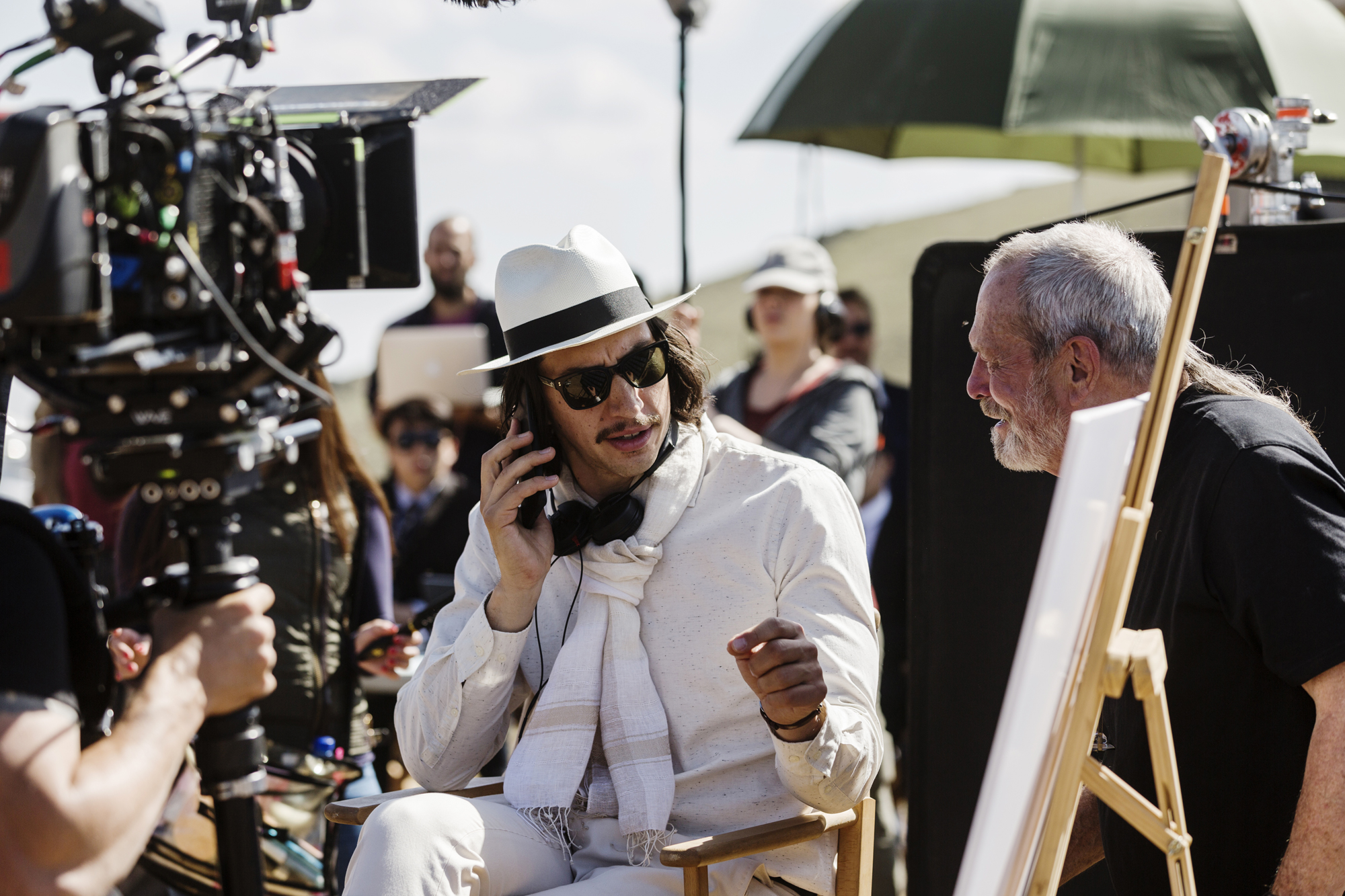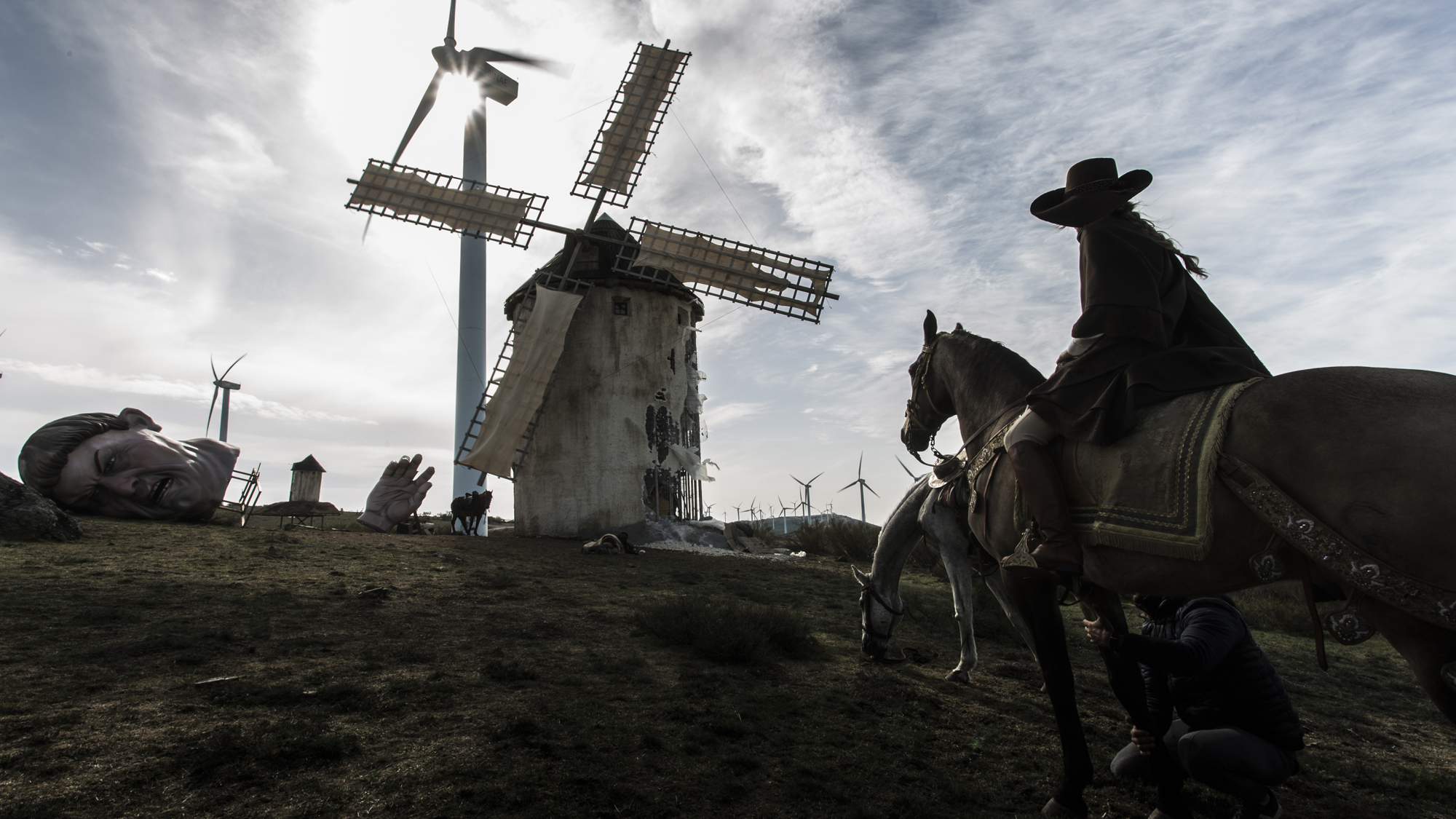
PRODUCTION STORY - CHAPTER FOUR
Click here for Production Story, Chapter Three
THE SHOOT AND THE LOCATIONS
Principal photography began on Monday 6th March 2017 and lasted for twelve weeks and three days. Apart from a handful of days shooting in the studio, cast and crew worked in remote, inaccessible locations in Spain, Portugal and the Canary Islands. The production moved around both countries, staying in most places for less than a week. Line producer Yousaf Bokhari recalls that all of the locations presented complications, saying, “All were difficult, because the film required locations that are remote. Except for our few days in a studio, everything was far away and inaccessible.”
The first five days were spent around the Castillo de Oreja, a ruined castle, 25 miles south of Madrid. This one location was used for four different settings, including where Toby finds the gold coins in a mule corpse. Fortunately, extensive preparation work had been done and the first week was a success. In the second week, cast and crew visited Talamanca de Jarama, north of Madrid, to shoot the inn scenes with Rossy de Palma and Sergi López.
Cast and crew then spent a week in Almonacid de Toledo, within impressive castle ruins, to shoot the Knight of the Mirrors sequence. Little set dressing was required, apart from a beautiful tent, made by Hydallgo and his team. The castle brought back memories of Terry Gilliam’s previous visit: “That was one of the first locations I saw, when I was planning to make this movie around 1990. It’s a mixture of Christian and Moorish architecture, so it fits into the world we’re trying to create.”
Next, the production made a return visit to the Monasterio de Piedra, a location where some of the curtailed 2000 attempt was filmed. The monastery’s grounds contain lakes, greenery and water features. One of its waterfalls provided the background for Toby and Angelica’s first meeting in ten years.
Gallipienzo, on a hilltop in Navarra, to the north of Las Bardenas, became the production’s village of Los Sueños, but on the first day of shooting there, a threatening storm loomed, bringing uncomfortable reminders of the previous, catastrophic flooding. Nicola Pecorini recounts, “We were on top of the mountain overlooking the village, and these black clouds, coming from the direction of Las Bardenas, opened. Thankfully, up on the mountain, we weren’t at risk of a flash-flood. In fact, lightning struck an electric tower half a mile away and the whole village went black. I have to thank the location manager, who personally went and pushed a fuse back in.”
The next location was near Villacastín on a ridge, covered completely with wind turbines. Says Gilliam, “When I was looking for locations, years ago, I remember driving on the motorway from Madrid towards Ávila and seeing these beautiful mountains. And a few years later, during another attempt to make the film, suddenly those mountains were no longer great mountains – they were hills. The giant machines had completely destroyed the scale of what we were looking at. And so, it was my idea to put an old Spanish windmill up there, amongst the modern turbines, to create the set of the commercial that Toby is directing.”
Then the production spent two weeks in the Convent of Christ in Tomar, Portugal, a UNESCO World Heritage site. It is a remarkable building, a former convent that was originally founded by the Knights Templar in the 12th century. All the party scenes at Alexei’s palace – both external and internal – were shot in and around the convent, although the internal scenes, filmed at night, proved to be the most technically challenging of the whole shoot.
When it came to the burning of Santa Cathartica at Tomar, Amy Gilliam found it a poignant experience, helping to ease the pain of the many years trying to get Quixote back into production. The producer says, “When we burned Santa Cathartica, it actually was such an emotional moment. We knew we were near the end of the shoot, and it was symbolic of the struggles and nightmares of the last 18 years.”
Three days were then spent at Castillo de Viñuelas, a palace to the north of Madrid. Here, the hotel scenes were filmed: the restaurant, the rooms and the corridor. Within the restaurant, Benjamín Fernández constructed a large baldacchino, under which the dancer and troupe perform.
Cast and crew then spent eight days in Fuerteventura, one of the Canary Islands, to shoot several scenes including the fight with the giants. The island was selected for its harsh, barren landscape. Says Gilliam, “Fuerteventura is very bleak, and it’s all volcanic, so there are these incredible structures that look big, black and dangerous. It’s almost like a strange dragon in the landscape, since the earth has been ripped apart by lava and volcanic eruptions. It’s a great contrast to the Monasterio, which was green and lush. You turn a corner, and you’re into a desert!”
Finally, the crew returned to Madrid for three days of stage work, including a shot where the camera pokes into the mouth of one of the giants. On Wednesday 31st May 2017, principal photography was complete and, reflecting on his collaboration with Gilliam, Adam Driver says, “Terry couldn’t control his enthusiasm, nor how deeply ingrained this movie was within his body. It seemed like an exorcism, every day we were making it.” Much to the Quixote veteran Nicola Pecorini’s surprise, there had been very few problems during principal photography. “Everything went so bloody smoothly, and we were terribly lucky with the weather. That alone for me was a sign that God is not mad at Terry any more. And he’s not mad at me!”
Click here for Production Story, Chapter Five

